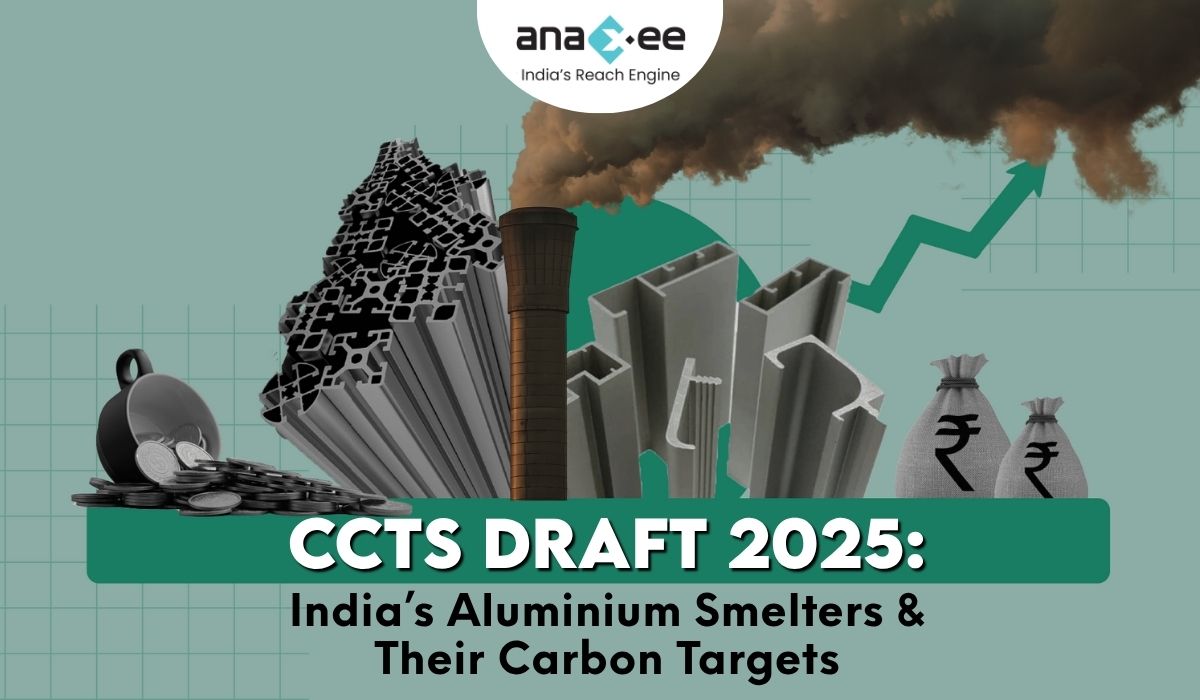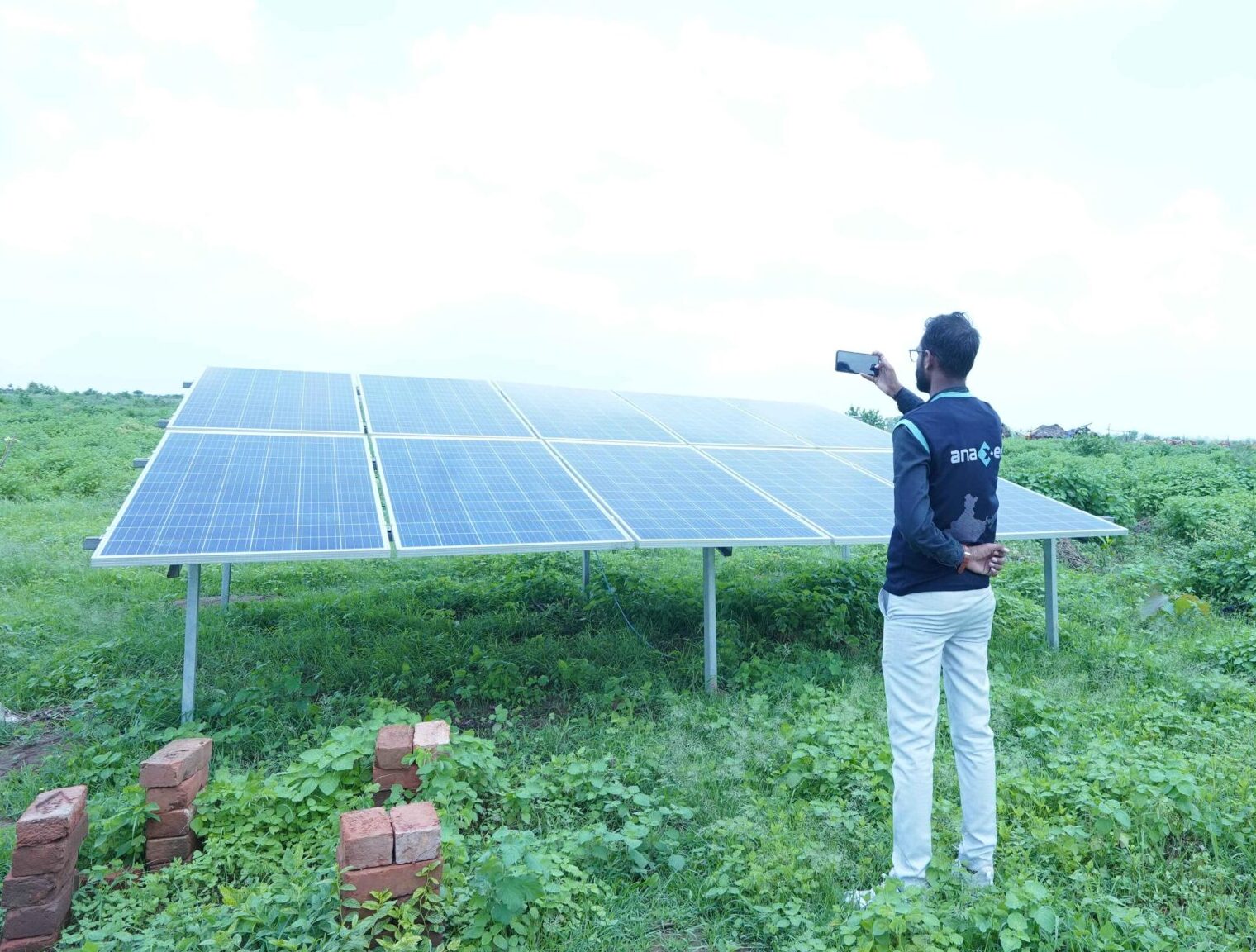BLOG

India’s Aluminium Smelters & Their 2025‑27 Carbon Targets- CCTS Draft
CCTS Draft 2025 Puts India’s Aluminium Giants in the Hot Seat
“Light metal, heavy footprint.”
Aluminium is the wonder metal of EV chassis and solar frames, but the smelting process guzzles electricity and spews as much as 16 t CO₂ per tonne of liquid metal. India now runs ~4 Mt y primary aluminium capacity—and the draft Carbon Credit Trading Scheme (CCTS 2023) finally pins numbers on that carbon bill.
Every big smelter and alumina refinery now carries a Greenhouse‑gas Emission‑Intensity (GEI) target for FY 2025‑26 and again for FY 2026‑27. Kiss the target and you can sell credits; miss it and you’ll be shopping for offsets—or shelling out penalty fees the Ministry has hinted will sting.
Below is your full‑fat guide:
-A warm‑up on why aluminium matters to India’s net‑zero math.
-Five chatter‑starter trends (so you sound smart in the elevator).
-A rank‑wise table of all smelters/refineries with baseline GEI + targets.
-Downloadable Excel for the diligence hounds.
-Plain‑English GEI math, decarb levers, FAQ, and a call‑to‑action if you need boots on the ground.
Grab a coffee; we’re going long- about 4 000 words of chatter, stats and opportunities.
1. Why aluminium is a battleground sector
India’s rise as the #2 aluminium producer (after China) rides on cheap coal‑power and bauxite abundance. Trouble is, each tonne of molten Al locks in:
-~12–16 MWh of electricity (largely coal‑based).
-Direct process CO₂ from carbon anodes (another 1.5 t CO₂/t Al).
-Scope‑2 emissions from captive power stations—Jharsuguda alone burns more coal than some state grids.
Result: The sector coughs up ~65 Mt CO₂e a year—roughly the annual footprint of Austria. CCTS aims to yank that curve south, pronto.
2. Five trends to watch (chat‑friendly, promise)
| What’s happening | Why you should care |
| Renewable‑swap PPAs – Vedanta signed 600 MW solar+wind blend to feed Jharsuguda. | Each 100 MW green PPA trims ~0.7 t CO₂/t metal. |
| Inert‑anode pilots – NALCO & Hindalco flirting with Alcoa‑Elysis tech. | Kills the carbon‑anode CO₂ slice (~1.5 t/t). |
| Scrap surge – India’s secondary aluminium ratio now 35 %. | Recycled Al needs <5 % of primary energy; may become the sector’s “credit mine.” |
| Fluoride‑gas capture mandates – CPCB draft pushes F‑gas scrubbers, indirectly nudging energy optimisation. | Could add ₹4‑5 k/t cap‑ex but also harvest HF for reuse. |
| Anaxee angle- 50 000 Digital Runners can verify bauxite mine reclamation or biomass‑pellet co‑firing claims at dozens of remote captive plants. | MRV pain solved, paperwork done. |
(Numbers drawn from company releases & CEA data, June 2025.)
3. list- who must cut how much?
| No. | Plant | State | Baseline_Output_tonnes | Baseline_GEI_tCO2_per_t | Target_GEI_2025_26 | Target_GEI_2026_27 |
| 1 | Vedanta Aluminium Ltd – Jharsuguda Smelter | Odisha | 1221348 | 13.66 | 13.46 | 13.25 |
| 2 | Vedanta Ltd – BALCO Korba Smelter | Chhattisgarh | 873433 | 13.19 | 12.99 | 12.79 |
| 3 | NALCO – Angul Smelter | Odisha | 788757 | 11.92 | 11.74 | 11.56 |
| 4 | Hindalco Industries – Aditya Smelter | Odisha | 1173253 | 13.76 | 13.55 | 13.35 |
| 5 | Hindalco Industries – Mahan Smelter | Madhya Pradesh | 1210949 | 14.47 | 14.25 | 14.04 |
| 6 | Hindalco Industries – Hirakud Smelter | Odisha | 845564 | 12.32 | 12.14 | 11.95 |
| 7 | Hindalco Industries – Renukoot Smelter | Uttar Pradesh | 522889 | 12.06 | 11.88 | 11.7 |
| 8 | Anrak Aluminium – Vizianagaram | Andhra Pradesh | 890689 | 14.61 | 14.39 | 14.17 |
| 9 | APNAL JV – Aluminium Park | Andhra Pradesh | 632356 | 15.45 | 15.22 | 14.99 |
| 10 | Vedanta Aluminium – Lanjigarh Refinery* | Odisha | 454113 | 12.28 | 12.1 | 11.91 |
| 11 | NALCO – Damanjodi Refinery* | Odisha | 874459 | 12.84 | 12.65 | 12.45 |
| 12 | Hindalco – Belagavi Refinery* | Karnataka | 363889 | 14.18 | 13.97 | 13.75 |
Units: GEI = t CO₂ e per tonne of primary aluminium (or alumina‑equivalent*). Ranking is by baseline annual output—the bigger the bar, the bigger the credit impact.
4. GEI- decoded over a napkin
Think of GEI as the “grams of guilt per kilo of metal.”
Formula (simplified):
(Smelter CO₂ scope‑1 + Captive‑power CO₂ scope‑2 + Anode CO₂) / Tonnes Al
Two checkpoints:
– Soft‑landing year FY 25‑26 – plants must already shave off 1.5 % of baseline.
– Hard‑stop FY 26‑27 – another 1.5 % drop. Miss either and you’re in the penalty column.
If BALCO Korba sits at 13.2 t and misses by 0.3 t over 0.98 Mt output, that’s 294 000 t CO₂e to cover—roughly ₹235–300 cr at ₹800–1 000 per credit. Numbers wake CFOs faster than espresso.
5. Who’ll shop for credits, who’ll mint them?
| Probable Credit Buyers | Probable Credit Sellers |
| BALCO Korba – old prebake lines, captive coal. | Hindalco Hirakud – WHR, 220 MW hydro PPA already live. |
| NALCO Angul – until its 1 200 MW solar is up (2028). | Hindalco Aditya – young pots, energy at 13 MWh/t, green PPA secured. |
| Anrak Vizianagaram – still ramping, high GEI. | Vedanta Lanjigarh (refinery) / scrap alloyers – low‑carbon feed. |
6. How can a smelter actually hit the target?
-
Flip the power stack
25 % renewable blend = ±3 t CO₂/t drop. Jharsuguda’s 600 MW PPA could save 4 Mt CO₂ a year. -
Boost amperage efficiency
Upgrading cell lining, modern point feeder, and AI bath‑height control yields 0.5 MWh/t savings (~0.4 t CO₂/t via coal power). -
Inert carbon anodes
If Elysis‑type inert anodes move from pilot to potline, you nuke 1.5 t CO₂/t plus pesky PFCs. Still five‑plus years out for most Indian lines, but watch this space. -
Ramp up scrap alloy capacity
Internal recycling loops offset primary quota; under the draft rules scrap crediting is still fuzzy, but lobbyists are on it. -
Offset externally
Partner with agroforestry, biochar, or rice‑husk‑pellet producers. That’s paperwork heavy—exactly where Anaxee’s last‑mile network reduces audit sweat.
7. Market ripple- credit price crystal‑ball
– Pilot trades in steel & cement mock auctions hint at ₹800–1 000 / t CO₂e.
– Aluminium is more energy‑intense: analysts expect ₹950–1 150 /t once smelters pile in.
– Early movers (Hindalco Aditya, Vedanta Jharsuguda potline‑4) could monetise ≥0.5 Mt surplus a year—₹500 cr side revenue at upper range.
8. FAQs
Q: Does captive solar count if wheeled through the grid?
A: Yes, provided you retire equivalent RECs and prove hourly matching.
Q: Are alumina refineries even covered?
A: Draft schedule lists major refineries; GEI normalised to primary‑metal to keep things consistent.
Q: What about perfluorocarbon (PFC) emissions?
A: They’re folded into GEI on a CO₂‑equivalent basis; improve your anode effect and you win twice.
Q: Will 2030 bring tougher cuts?
A: Almost certainly—expect an annual 2 % ratchet once the Indian Carbon Market matures. Start now or pay double later.
9. About Anaxee:
Anaxee is India’s Reach Engine! we are building India’s largest last-mile outreach network of 100,000 Digital Runners (shared feet-on-street, tech-enabled) to help Businesses and Social Organizations scale to rural and semi-urban India, We operate in 26 states, 540+ districts, and 11,000+ pin codes in India.
We Help in last-mile execution of projects for (1) Corporates, (2) Agri-focussed companies, (3) Climate, and (4) Social organizations. Using technology and people on-the-ground (our Digital Runners), we help in scale and execute projects across 100s of cities and bring 100% transparency in groundwork. We also work in the Tech for Climate domain, providing technology for the execution and monitoring of Nature-Based (NbS) and Community projects. Our technology & processes bring transparency and integrity into carbon projects across various methodologies (Agroforestry, Regen Agriculture, Solar devices, Improved Cookstoves, Water filters, LED lamps, etc.) worldwide.
▶️ Ping the Anaxee’s Climate Desk at sales@anaxee-wp-aug25-wordpress.dock.anaxee.com




